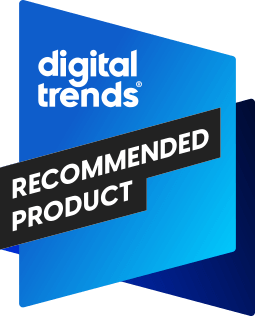Share Share Share Share Email Running a business or healthcare facility can feel overwhelming. Managing daily operations, handling growing data, and ensuring smooth workflows often leave little room for new ideas. Many leaders struggle to keep up while balancing tight budgets and increasing demands.
Did you know that 70% of companies are now using IT solutions to improve efficiency? From automating tasks to connecting teams remotely, technology is changing how organizations operate. This blog will examine straightforward ways IT tools can save time, reduce costs, and improve decision-making in your business or healthcare setting. Ready to find better solutions? Keep reading.

The Role of IT Solutions in Streamlining Operations IT solutions make managing daily tasks quicker and more manageable. They bring structure to disorganized workflows, saving time and minimizing mistakes. Integration and Interoperability of Systems Connecting systems increases efficiency across business and healthcare operations.
Information flows faster when software, databases, and digital tools communicate efficiently. For example, electronic health records (EHR) improve patient care by centralizing medical histories for quick access. Providers offering region-specific services, such as Worcester business IT solutions , help local companies implement automation that reduces time spent on manual operations while boosting overall efficiency.
Businesses benefit from linking inventory management with billing processes to avoid delays. “Interoperability breaks silos and drives better outcomes.” Integration also reduces redundant tasks by automating data transfers between departments.
It ensures consistent information is available in real-time across platforms. This connectivity helps decision-makers cut through chaos and focus on practical insights. Automation of Repetitive Processes Integrating systems establishes the foundation for automating repetitive tasks.
Businesses often spend numerous hours on manual processes like data entry, scheduling, or report generation. Automation can manage these tasks quickly and accurately, reducing errors and allowing employees to focus on more critical work. In healthcare facilities, automating administrative workflows increases productivity.
Tasks like updating electronic health records or processing patient appointments are completed faster with minimal human involvement. This change improves workflow productivity while reducing operational costs across departments. Enhancing Decision-Making Through Data Analytics Data analytics provides a clearer understanding of operations, turning disorder into clarity.
It enables leaders to act more quickly and intelligently with consistent insights. Leveraging Predictive Analytics Predictive analytics predicts future trends by examining historical data. Businesses can foresee customer needs, enhancing inventory management and reducing expenses.
Healthcare facilities apply similar approaches to foresee patient readmissions or detect potential health risks earlier. Retailers examine purchasing habits to focus promotions effectively. In hospitals, predictive tools evaluate electronic health records to recommend preventive care strategies.
These findings contribute to improved decision-making, minimized waste, and more efficient operations across industries. Organizations aiming to apply these strategies more effectively often turn to expert healthcare IT consulting to interpret complex datasets and align insights with patient outcomes. Real-Time Monitoring and Reporting Real-time monitoring helps businesses track data as it progresses.
Healthcare facilities, for instance, can watch patient care metrics or electronic health records immediately. IT solutions notify teams of changes or risks early on, keeping operations efficient and secure. Reporting tools make decision-making easier by providing clear insights from collected data.
Dashboards highlight critical information without delay. “Better decisions demand better timing,” many experts say. **Next: IT Solutions for Enhanced Connectivity** IT Solutions for Improved Connectivity Technology bridges gaps, making departments talk like old friends.
Secure remote access adds flexibility to how teams work together. Enabling Seamless Communication Across Departments Efficient communication strengthens teamwork and reduces delays. Combined information systems allow departments to share data instantly, cutting out unnecessary back-and-forth.
Businesses save time when teams access shared platforms for updates, tasks, or schedules. Electronic health records enable healthcare staff to track patient care across units with ease. This unified method minimizes errors and improves service quality.
Clear digital tools ensure everyone stays on the same page without added confusion. Supporting Remote Access and Telehealth Remote access tools assist healthcare facilities in connecting with patients regardless of location. Doctors can examine electronic health records from home or in urgent situations.
Telehealth services enable patients to consult specialists without the need for extensive travel. Small businesses also gain by allowing employees to work remotely while maintaining productivity. Digital tools enhance remote interactions, making them more dependable, conserving time, and lowering operational costs.
Cloud computing provides secure data sharing among teams in various locations. Overcoming Challenges in IT Implementation IT adoption often feels like navigating uncharted waters. Tackling hurdles head-on makes the journey smoother and more rewarding.
Addressing Data Security and Compliance Protecting sensitive data is an essential task for businesses and healthcare facilities. Cyberattacks have risen by 38% in 2023 alone, putting electronic health records and business operations at risk. Encrypting databases lowers the risk of breaches.
Restricting employee access reduces internal misuse or mistakes. Regular training prepares teams with skills to identify phishing or other threats. Adhering strictly to regulations like HIPAA ensures the protection of patient care information while avoiding significant fines.
Failure to comply with rules leads to legal consequences and loss of customer trust. Cloud computing supports compliance with these standards through encrypted storage options and controlled access measures. Monitoring systems continuously assess vulnerabilities, helping identify issues early on before they escalate further.
Ensuring Change Management Success Change often stirs resistance, especially in healthcare facilities and businesses transitioning to new IT systems. Clear communication about benefits such as improved workflow efficiency or better electronic health records can ease concerns. Training employees thoroughly prepares them for changes while reducing fear of the unknown.
Focus on involving team members early during IT implementation. Assigning roles and gathering feedback throughout the process builds confidence and keeps everyone aligned with goals. Regular check-ins help address issues before they escalate, keeping operations steady despite challenges.
Conclusion Technology advances businesses and healthcare, making work more efficient and decisions more informed. IT solutions save time, reduce errors, and enhance communication. They link people across departments or great distances.
Investing in these tools today lays the foundation for stronger operations tomorrow. Keep progressing with tech—it’s valuable! Related Items: it solutions , Modern Businesses and Healthcare Share Share Share Share Email Recommended for you Layer 2 Computers: Your Go-To Source for IT Solutions Managed IT Solutions: Your Strategic Advantage for Business Growth and Unwavering Peace of Mind How to Improve Cybersecurity with IT Solutions Comments.
Technology

Enhancing Operational Efficiency: The Role of IT Solutions in Modern Businesses and Healthcare

Running a business or healthcare facility can feel overwhelming. Managing daily operations, handling growing data, and ensuring smooth workflows often leave little room for new ideas. Many leaders struggle to keep up while balancing tight budgets and increasing demands. Did you know that 70% of companies are now using IT solutions to improve efficiency? From [...]The post Enhancing Operational Efficiency: The Role of IT Solutions in Modern Businesses and Healthcare appeared first on TechBullion.















